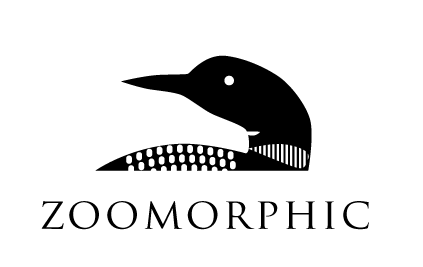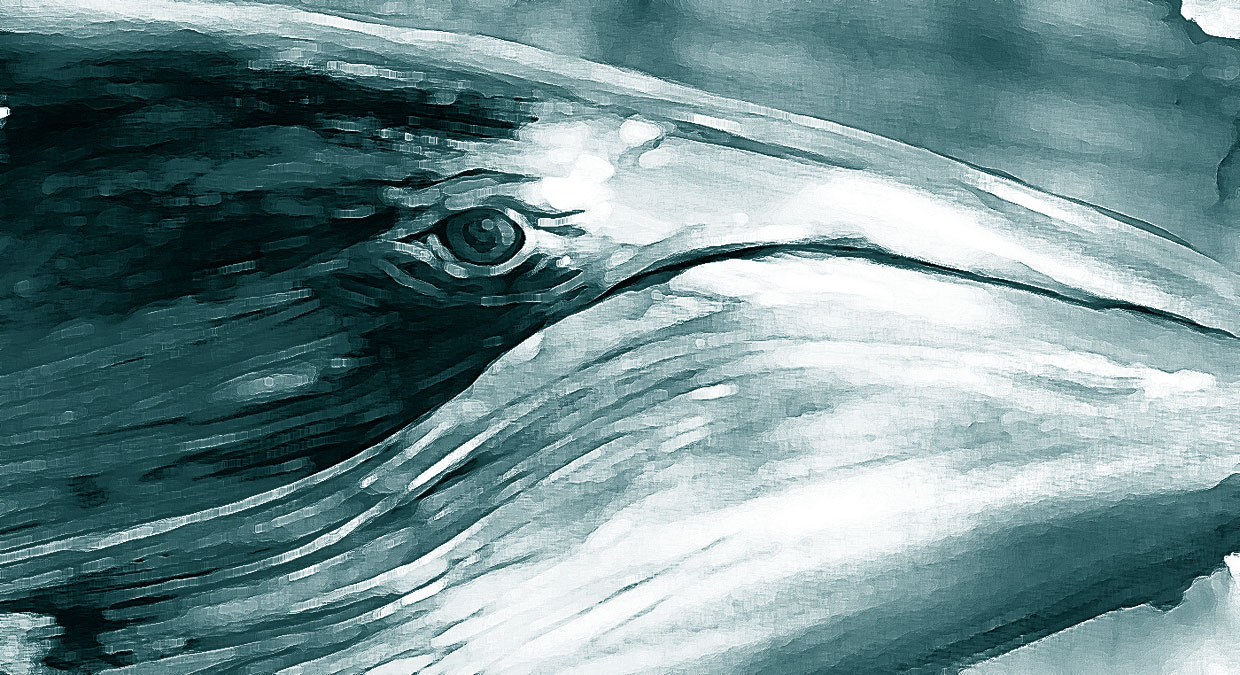by Peter Reason
“We might be in for a tedious day,” I warned Suzy and Gib. “Motoring in flat calm and very little to see.”
I was on the second stage of my voyage from Cornwall round the west coasts of Ireland and Scotland. Suzy and Gib had joined me on my yacht Coral earlier in the week, both students of outdoor education at Edinburgh University, Suzy from Germany, Gib from Malaysia. Neither had been sailing offshore before, so I was a little concerned in case conditions on the Atlantic coast were too rough for them. I need not have worried: the weather was remarkably quiet, with no wind and a haze low on the surface of the sea.
We left Crookhaven on the south coast of Ireland and crept west along a shoreline completely devoid of any surf. The mist drew closer around us, blurring details and obscuring anything more than half a mile away. I might think it tedious, but all was new to Suzy and Gib, they had never seen the shoreline from a small boat before. Suzy gazed out into the mist, then turned to me, saying, “It reminds me of Michael Ende’s Neverending Story I read as a child, and the ‘Nothing’ within turns everything else into nothingness once it gets touched. It’s neither a hole, nor darkness, just nothingness. How that used to scare me! It’s as if I could see it from here, as if we were sailing straight into it – nothingness – but it doesn’t frighten me this time.”
Gib was the first to spot the splash of a couple of dolphins as they travelled past; and Suzy pointed out how the hazy sun played strange tricks on the cliffs around Mizen Head, reflecting from the sheer surfaces so that the light seemed to be running down the rock face like a waterfall.
From Mizen Head, the most southwesterly point of Ireland, I set a course across the mouths of Dunmanus and Bantry Bays toward Dursey Sound at the tip of the Beara peninsula. As we ventured out to sea the coastline gradually faded. The sea was occasionally decorated in tiny ripples, but most of the time like polished stone. Coral thrust her way forward, the tone of the engine never varying, the Autohelm steering a straight course, her bubbling wake stretching out behind across the flat surface of the sea.
We watched gannets circling high above the sea, flying slowly, heads angled downwards as they looked out for fish. If we were lucky, we would catch sight of one slide sideways into a dive, wings held back in a delta shape, then drawn in close so they struck the water with scarcely a splash. We passed clusters of guillemots, which scurried away from the boat as she approached, their heads jerking anxiously from side to side. Sometimes they dived neatly out of sight one by one; sometimes took flight altogether in a flurry of excited wings. “We won’t see puffins,” I said authoritatively, “They are back out to sea now after the spring breeding season”. But soon Gib pointed one out, then another and another.
Then came the first excitement. Again it was Gib who saw the splash and the dorsal fin of dolphins coming our way. They seemed at first to be passing us by, but then they turned and swam directly toward Coral, passing under the hull in water so clear we could see every detail of their bodies. They played around the bows for a few moments so we could see how their mouths curve in what appears as an enigmatic smile; watch the breathing hole in the top of their heads open and close before they slipped seamlessly under the water again. They didn’t stay with us long but soon turned and were off out to sea in long elegant leaps.
Dolphins and puffins seemed to be as much excitement as one might hope for in a day. Soon Suzy was deep in a philosophy book, Gib was on the foredeck sketching and I was struggling in my notebook, trying to find words to describe the strangeness of the misty seascape.
Then Gib called again, more excitedly this time, struggling to find the English words for what she was seeing, “Something white! Something white! Under boat!” Suzy and I hurried forward to where she was leaning over the pulpit in the bows. We followed her pointing finger over the side, where deep in the water the enormous shape of a whale was passing under the hull. What Gib had spotted was the characteristic white bands on the pectoral fins of a minke whale. It moved, apparently effortlessly, beneath the keel and disappeared into the deep. We looked at each other in amazement. Before we could catch our breaths, the whale surfaced alongside Coral, no more that fifteen yards away, the long slow arc of its back emerging from the water, fountains of spray blowing from its breathing holes before it dived again.
Again it breached, this time surfacing head first so we could see its eye, its long mouth and pale underside, the pleats running back underneath its chin toward its flippers. Coral is a little boat, just 9 metres long – only a little longer than the average minke – with scarcely a metre of freeboard. We were not distanced observers but on the same level, and as the whale’s head rose above the surface we were looking directly eye-to-eye and experienced some strange intimacy in the encounter. It had a curious expression on its face, not seeming to smile like a dolphin, but rather conveying an immense calm.
Then, raising its tail fins clear of the water it dived almost vertically out of sight into the depths below us.
That must be it, we agreed. To expect more than three sightings would be greedy, would it not? But the whale clearly didn’t think so, continuing to breach and dive in Coral’s wake for several minutes before finally disappearing. It left us all with big grins on our faces, Suzy holding her stomach as if it hurt. “It was so close I had to hold onto something.” she said.
What more could we expect? We carried on through Dursey Sound into the Kenmare River, the visibility lifting just enough for us to see the tops of mountains beyond the coast. Then more splashes as a pod of maybe twenty small dolphins raced across our bows with a flock of guillemots hurrying in their wake. Almost exhausted with excitement and stimulus we made our way across the broad river mouth, picked up the leading lines that guided us through the rocks and into Derrynane Harbour, where we found a snug anchorage for the night.
After supper we sat around talking about what we had seen. “The dolphins seemed to just come up and check us out,” said Suzy, “then they travelled on, not knowing how much I was shaken by their appearance.” Gib smiled quietly as we talked, never one for many words. But it was the whale that stayed in our minds. We looked in our reference book and confirmed it was a minke whale or lesser rorqual. We read that the pleats under the chin allow its mouth to expand and take in huge amounts of water that they filter through baleen plates growing from their upper jaws while feeding. But the image remained stronger than the abstract information: we felt we had met, if only briefly, another creature that, while immensely strange, is also an intelligent, air-breathing mammal, just like us.
It might be said that the idea that we ‘met’ the whale in any sense is dangerous anthropomorphic projection. I resist that charge, even as it rings in my own ears. In his book The Dream of the Earth, Thomas Berry, the priest and cultural historian who called himself a geologian or ‘Earth scholar’, offers us the vision of ‘an intimate earth community, a community of all the geological, biological and human components’. Our fulfilment, he writes, is ‘not in our isolated human grandeur but in our intimacy with the earth community’.ii
The mist didn’t take us into the ‘Nothing’ of Suzy’s imagination but into something far more significant. The quiet sea, the diffuse, disorienting qualities of the mist and the sudden appearance of the whale shook us out of our everyday, distanced way of seeing the world. It opened for us a brief encounter that held precious qualities of intimacy. It was a gift and an immense privilege.
Peter Reason has made three ecological pilgrimages around the western seas of Ireland and Scotland, seeking sense of deep participation with the more than human world. He is the author of Spindrift: A wilderness pilgrimage at sea (Vala Publishing Cooperative, 2014), which weaves an exploration of the human place in the ecology of the planet into the story of a sailing voyage. Prior to his retirement from academia, he made major contributions to the theory and practice of action research in writing, teaching and research about sustainability. He is Professor Emeritus at the University of Bath.
i – onthewesternedge.wordpress.com
ii – Berry,Thomas. The Dream of the Earth. San Francisco: Sierra Club, 1988,p.xiv.

